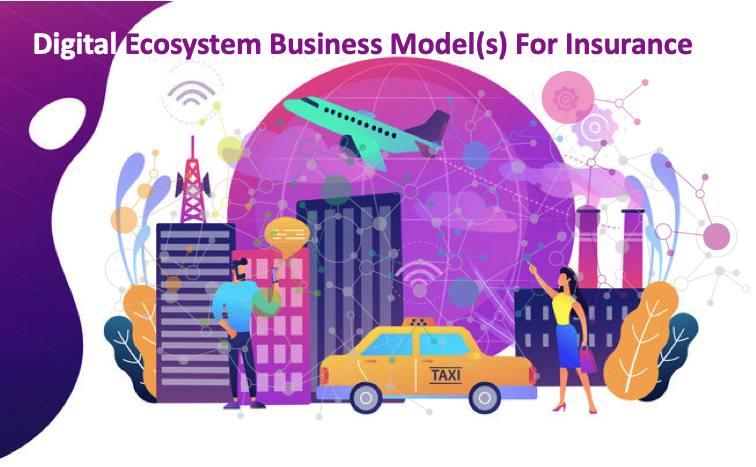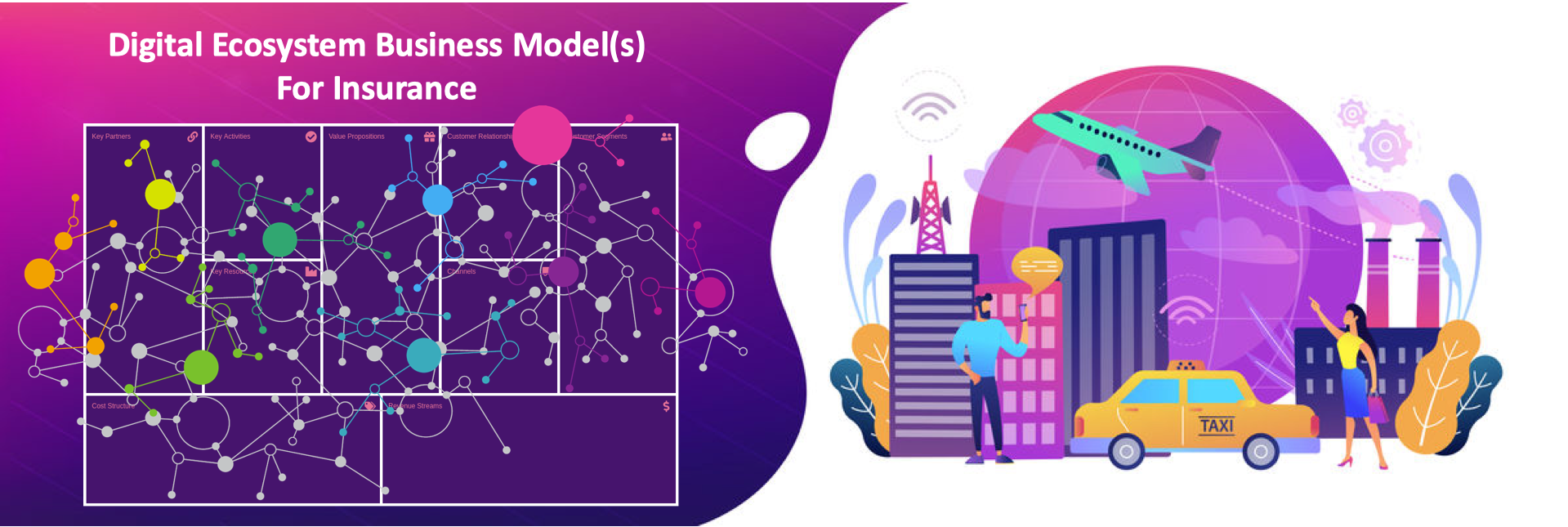
COVID-19 & Insurance: Impact, Response & Innovation









The Kentucky Legislature has passed the first state law in the U.S. providing a comprehensive framework for an insurance regulatory “sandbox” for insurance technology products. The new regulatory sandbox, which will be administered by the Kentucky Department of Insurance (DOI), allows for private-sector flexibility while preserving necessary consumer protections.





For the most part, insurance carriers haven’t really viewed the claims process in a positive light, as it is complex (especially with a multiparty property and casualty claim), tedious (lots of data and fact gathering), and filled with suspicion (carriers thinking that policyholders could be trying to defraud them and policyholders thinking that carriers could be trying to pay less than what they are entitled to). Because of these factors, carriers have often viewed the claims process as more of a necessary evil than an opportunity to deliver a better experience to policyholders.
Well, it’s safe to say that carriers’ mindset on the claims process has shifted in recent years as a wide range of InsurTech vendors has emerged to enable a better claims experience. These vendors offer solutions that can minimize the tedium, lessen the complexity, and lower suspicion for both parties, all of which ultimately contribute to a better claims process for policyholders (and carriers as well).
Carriers can access InsurTech solutions that allow automated first notice of loss intakes, deploy drones to conduct property inspections, empower claimants to upload photos or videos of damaged property, use telematics to determine exactly the extent of damage a car or home has incurred, or leverage artificial intelligence to detect fraud. Many of these solutions are focused on delivering an efficient process and include chatbots or flow management software.
Beyond process is the ever-increasing number of data sources that carriers can use to arrive at a more accurate claims decision more quickly than ever. These data sources are not limited to standard data, such as property characteristics or vital statistics. These sources can include data such as weather data, social media data, and geolocational data—all of which can be used to more fully inform carriers about the people behind the claims, conditions at the time a loss was incurred, or the true value of the contents lost. While data on its own is nice, analytics that can draw out meaningful insights about a claim is divine. This is where the evolution of digital claims is heading.
But the mere existence of these capabilities does not mean that carriers are embracing them widely. It would be fair to say that a majority of insurance carriers have only begun to explore using these InsurTech solutions, and a majority of those carriers that have gone beyond exploration have only embedded a limited number of these techniques into their claims processes. Indeed, there is a long way to go for carriers to embrace a holistic solution that makes the claims process less tedious, less complex, and more transparent.
The Silicon Valley Insurance Accelerator (SVIA) will host its annual InsurTech Fusion Summit: Rise of a Digital Insurance Industry on June 18 and 19, 2019, in San Francisco. Digital claims will be a main topic of conversation with many new data elements and technologies being discussed. Don’t miss the opportunity to learn how to take the next step in building a better claims experience through digital tools.
Register now at www.insurtechfusion.com and get 15% off of your registration using the code JAYS15. Aite Group and SVIA look forward to seeing you there and helping you take the next step in your digital transformation journey.


Digital ecosystems are taking over industry after industry, especially those with a focus on products and services. From home buying services to banking to insurance, digital ecosystems are changing the way consumers and companies do business.
A simple example is Intuit, the online financial management software. Intuit makes it easy to connect all of your financial solutions and data together into one easy-to-manage solution. Another example is what John Hancock is doing with their life insurance offering. They offer rewards based on healthy food purchases and activities from wellness trackers such as Fitbits.
Insurance and InsurTech innovators are exploring and harnessing the digital ecosystems that surround and support people, their lifestyles, and stages of life. They are also exploring the digital ecosystems surrounding and supporting industries and the businesses within them. Digital ecosystems are composed of cloud-based interoperable platforms, solutions, devices, and data. The impact of digital ecosystems grows as the solutions within them grow in number, capability, interoperability, and the value they create. The solutions these innovators develop and/or become part of will completely upend the world of insurance.
Auto insurance, health insurance, coverage around businesses, and even life insurance will all be dramatically changed by these tech-forward ecosystem-enabled solutions and will set new standards in the value and the digital experience provided to insurance customers.
Participants across the industry are tapping into these digital ecosystems opening the door to growth and innovation opportunities.That includes InsurTechs and insurance companies. It also includes innovative solution providers like Majesco and other solution providers are developing platform strategies that make it easy for their insurance customers to tap into the data, analytics, and cloud-based insurance solutions that are available within digital ecosystems. This accelerates insurance companies’ and InsurTechs’ ability to modernize and streamline their processes and services and bring innovative solutions to market more quickly.
Digital ecosystems are helping insurance companies, brokers, agents, and InsurTech companies to open up new pathways in order to retain current customers and attract new customers with traditional services, as well as modern products.
Customer Engagement
Digital ecosystems are creating a number of new ways in which companies can connect with and stay in touch with customers. Multiple touchpoints, like mobile devices, wearables, social media, email, artificial intelligence-driven chatbots, and more are literally opening up avenues for companies to create new value and engage with customers. That includes value added solutions that become part of a broader insurance offering such as activity and diet trackers.
What’s more, having access to the data and insights that come back from these devices and solutions helps insurance companies personalize the insurance products and customer experience for individuals and businesses. Competing on a successful level in the future will require that insurers develop new capabilities and an ecosystem of partners that enable data-and-analytics-powered solutions to engage and create value for customers.
Risk Identification
Another major way in which digital ecosystems are changing the insurance industry, as well as the customer-consumer experience, is to help identify risks and gaps in coverage, which in turn will personalize and improve the overall experience for the customer.
New policies that adjust the price or overall coverage in relation to changing risk identifiers are creating incentives to manage risk more directly and actively. Some companies are now producing policies that provide premium credits to people who live a healthier and risk-free lifestyle.
Think about how Progressive Auto Insurance provides discounts and breaks for customers who drive better. The company uses technology known as Snapshot to see how their customer is driving and give them incentives based on their driver safety skills. Innovative insurers are exploring more potential around next-generation policies in other casualty areas to adjust price or coverage and use real-time streams to process claims more accurately and efficiently.
Creating Customer Value with Digital Claims Processes
The ability to tap into the devices, solutions, and data in the digital ecosystem surrounding the end insured is changing the traditional claims management system from an adversarial relationship with the customer to one that actually improves customer loyalty. Using data from devices and other sources, claims can be automatically generated and resolved. Examples of this are emerging in everything from flood to crop to auto to home appliances. The most innovative insurance companies are using these data sources and analytics-driven approaches to automate the entire claims-handling and fraud-detection process.
Chatbot-based systems, for example, are offering customers an automated claims payout process within a matter of seconds. This can be seen in digital native companies like Lemonade, a young startup insurance company that utilizes technology and behavioral science in every aspect of its services. Lemonade works actively with its customers to prevent claims and provide services that add value to customers.
Strategy and Partnering
Insurance companies and InsurTechs (and the tech vendors that support them) that want to succeed in a digital ecosystem market need to develop a culture and strategy that continually evaluates the ecosystems surrounding customers for solutions and data. Doing so will enable them to optimize the value they create and the experience they provide for customers as well as improve the effectiveness of internal processes. Companies like Rein provide insurers and other InsurTechs a next-generation platform and ecosystem that enables companies to bring digital generation insurance solutions that leverage ecosystem solutions and data and machine learning to market faster. From regulatory compliance to risk selection to security features, companies like Rein are helping accelerate the ability of insurance innovators to tap the power and speed of innovation provided by digital ecosystems.
The world of insurance is changing, and doing things the traditional way won’t take companies far enough. With the availability for more digitally-connected data and services and customer experiences, the consumer is demanding products and services that provide them the benefits provided by ecosystem enabled solutions.
Developing a digital ecosystem strategy is a necessity in today’s world. It requires thinking about the customer in a digital world and how the insurer can create value for them by becoming an integral and interoperable part of that world to see how they can successfully support their customers with effective insurance options and services. When this is determined and outlined in an effective way, insurance and InsurTech companies will be able to develop the right strategies and the right partnerships with which to develop products and customer experiences that give them a sustainable competitive advantage.

The future of insurance is already upon us as traditional insurance companies incorporate more tech-savvy features into their options, and giant tech companies offer insurance services. Insurers, brokers, InsurTech companies, and companies such as Amazon are changing the foundation of insurance into a digital ecosystem providing connected insurance and value-added services for customers.
Insurance technology has been developing at a rapid pace in the last decade. Software robots can now mimic human actions and produce repetitive tasks across multiple business applications; FinTechs and InsurTech companies have made major inroads by creating powerful applications that handle problems and deliver high-quality digital experiences. Mining social media data is improving risk assessment for insurers, increasing the capabilities of fraud detection and enabling new customer experiences.
The future for insurance is a connected insurance atmosphere, a digital playground for everything from tech giants to hip startups. As platform providers change and become more dominant within these ecosystems, they’re beginning to change what is required to compete as an insurance provider.
Connected Data Boosts Innovation
Insurance companies, such as Progressive, began capturing real-time data from customers. Data-capturing devices and connected data coupled with predictive analytics and machine learning are delivering not only improved customer experience and overall satisfaction but better services and new business models that drive growth and profits.
Connected insurance has given way to personalized premiums for auto insurance companies and their customers. A U.K.-based InsurTech company, Bought By Many, has been aggregating users with specific and personalized insurance needs, allowing insurers to offer them services at scale. This kind of service is reflective of what’s going on in the commercial insurance industry. Everything from data patterns to cloud-based applications are forming what it means to offer insurance to customers, helping to personalize an experience and create a more tailor-fit model of connected insurance.
Insurers have a unique level of access to rich datasets. Most insurance companies can be reluctant when it comes to revealing why they ask certain questions because it can reveal too much about how they price out their products based on data. But InsurTech companies have learned that customers trust them more when they show the benefits of providing such data for a more personalized experience.
Companies who caught on to this customer-centric ecosystem have changed their business models to give customers more control over their premiums. This enables the customer to acquire insurance when and where they need insurance and also enables insurers to reward customers based on their risk profile. This pay-as-you-go, pay-as-you-drive structure has been changing the auto insurance game with companies like Root and MetroMile popping up as disruptors.
This model is also becoming popular among health insurance providers, which rewards customers for living healthier lifestyles with lower premiums. They can do this by tracking behavior using wearable technologies, like with Oscar, a Google-backed InsurTech startup that rewards users for every step they take when they are being tracked using a wearable band. Other insurers are collecting data on heart rate and blood sugar levels for diabetics to adjust their risk profile while also providing coverage. This change in the ecosystem has made insurance companies lifestyle companies or essentially tech companies that offer insurance as a bonus.
Offering Perks
Gamification has made its way into every industry as mobile app usage has seen a sharp rise. User experience and user design show up in insurance companies’ assessments of customers by providing a progress bar to show how much longer the customer has until they are finished. It’s a small but simple way to include gamification into a process that’s usually seen as a nuisance.
Gamification can help to display information for customers more clearly so they choose the right product and service and get the lowest premium for it. This could include having them answer a few basic questions that apply to them the most. Plus, with pay-as-you-go, companies are offering perks and discounts when customers track their lifestyle habits and daily goals, hitting milestones and competing in a friendly way with others in their health community.
AI and UX Design
UX design has paved the way for a more streamlined approach to holding the attention of the customer and prospects. Companies like New York Life offer up an abundant knowledge base for customers looking to get information on the purpose of life insurance and what types of coverage they can purchase. The company has made it easier for first-time insurance buyers to sift through stacks of policies with dense information and get to the information they need on a simpler scale.
When it comes to artificial intelligence (AI), companies like Lemonade, offering renters and home insurance policies for homes, apartments, co-ops, and condos, are using AI bots who can help find the best coverage through web chat features. Plus, mobile apps are allowing customers to get insured in under 90 seconds and paid in three minutes. This is making insurance sexy as opposed to dealing with the long, drawn-out process of legalese that would turn customers away in the past.
InsurTech technology has created a pathway for mobile diagnosis and prescribing, like with Roman, a men’s health startup that allows men to find the service they need for things like erectile dysfunction and hair loss. While not an insurance company, Roman is mirroring a new wave of Teladoc services that most major companies are implementing now with 24/7 access to health care.
The future of insurance is ripe with opportunity for insurers who move beyond a product focus and look deeply into the goals and outcomes that are most important to their customers. Those who learn how to harness data, services, and devices in the digital ecosystems surrounding the insured by leveraging emerging technology and utilizing awesome UX to help customers understand, prevent, and manage risk will emerge as the future insurance leaders.


It’s hard to look at any industry in today’s digitally connected world and spot something that isn’t being guided, influenced, or altered by technology. In today’s fast-paced economy of digital connectivity, it’s all about personalization and the push toward a more hands-on method of customer engagement, the business and communication strategy that connects an external stakeholder and a company through constant communication and the creation of value for the customer. Think about companies like Amazon, eBay, Apple—all stalwarts in the customer engagement community, bringing a hassle-free experience right to their fingertips and doorstep.
The same can now be said of leading insurance companies that rely on technology, or Insurtech, to deliver positive results and engage with customers in a more proactive, omnichannel way. In the world of on-demand and connected insurance offerings rapidly coming to market, a competitive customer experience will make all the difference. The most innovative of those are combining insurance with added value, added services, and benefits from ecosystems outside of insurance. These services will improve customer engagement and quality of product and require thinking through a totally new approach to the customer journey and the customer experience.
Redesigning Customer Expectations
First, it’s important to look at how tech companies that are unrelated to the insurance industry have changed the consumer experience from top to bottom. Tech giants, as alluded to above, have completely upended expectations that customers have in obtaining practically any product or service they need or want. By developing a truly digital and mobile experience, these tech companies have redefined a new customer engagement and experience standard. It’s results: instant gratification, immediate connectivity and a new set of expectations among the consumer base.
Companies like Apple and Netflix have not only changed what customers want and expect from their products and services but the entire customer experience. They are using, big data, social media, and artificial intelligence (AI), as well as other advanced technologies to more deeply understand the customer, anticipate their needs and recommend next steps. Insurance companies that don’t create digital-first strategies when looking to attract or retain customers will find themselves rapidly falling behind their more advanced competitors.
Consumers are also becoming more comfortable with trading their personal information for these more personalized faster and efficient experiences. Ease, convenience, and value across the customer journey are now king and are shaping connected and on-demand insurance which will become the new normal over the next few years. With data-driven insight and artificial intelligence, insurance companies that use this data and these technologies to anticipate and deliver personalized experiences and value their customers’ needs will emerge as the winners.
A New Thought Process
Customer engagement in the insurance sector is evolving thanks to InsurTech’s like Lemonade, with renters insurance or Ladder in life insurance or Next in Small Business Insurance. Even large carriers like John Hancock with their Vitality program are changing the game. The emerging paradigm changes the relationship between consumer, insurer, and increasingly the community surrounding the insured. New and innovative customer engagement paradigm starts by engaging the end insured through the ecosystems that surround them. Those include not only smart homes, smart cars, smart factories, and smart mobile devices but also the places online where users search for, purchase or use goods and services. This new engagement paradigm is moving insurance from a sterile relationship of premium payments and claims checks to a relationship in which insurance combined with other services helps the user more effectively achieve their life, health, and business goals.
Insurance companies are utilizing modern methods to work with the consumer and altering their entire business process to include forward-thinking on-demand insurance. Leading Insurance companies are investing time and effort to research to understand the touch points and services in the digital ecosystems surrounding their current and prospective customers.
Customer Engagement in Insurtech
With that information, leading insurers are now able to define new customer segments and risk pools: Information they are using to develop new products, new business models, and new engagement models. Customer engagement is now being leveraged by insurers in the on-demand insurance world through a digital-forward methodology. By combining big data, with social media engagement strategies these companies can now understand and provide personalized coverage and engagement models that align in real time with the customer’s life stage, style, and circumstance or activity.
The major impact of staying connected with customers through engagement has been the increase in retention ratio. Pleased customers help an insurance company get ahead of their competitors in the connected insurance industry because personalization has already been built out. This approach not only increases the loyalty and retention of customers it’s also increasing underwriting profits while at the same time reducing customer acquisition and support costs.
Looking Toward the Future
This is the perfect time for insurance companies to capitalize on the digital ecosystems and services surrounding customers to drive new revenue and profits through new customer engagement paradigms. Customers are looking for experiences and products in the insurance industry that meet their personalized needs and can keep them engaged with not only the company but the products and services that are being offered.
Digital generation customer engagement is the first move toward the completion of a digital transformation. As Insurer’s taking this step to find that it’s helping them develop a far more customer-centric strategy and even more importantly a customer-centric culture.
While insurance companies are seeing new threats and challenges coming from the digital ecosystems surrounding customers the leaders are also capitalizing on new opportunities to connect with customers and position themselves as leaders at the next frontier of the industry.
Come listen to topics like this and others from innovative industry leaders at InsurTech FUSION Summit on June 18 -19 in San Francisco.